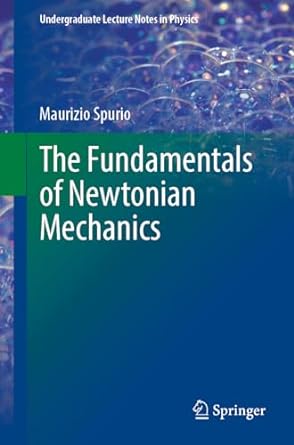The CO (carbon monoxide) molecule is composed of one carbon atom ((mathrm{A}=12)) and one oxygen atom ((mathrm{A}=16)).
Question:
The CO (carbon monoxide) molecule is composed of one carbon atom \((\mathrm{A}=12)\) and one oxygen atom \((\mathrm{A}=16)\). The mass number \(\mathrm{A}\) represents the sum of the number of protons and neutrons in the nucleus. Proton and neutron have mass that we assume to be identical, equal to \(m_{p}=1.67 \times 10^{-27} \mathrm{~kg}\). The electron mass is negligible \(\left(m_{e}=1 / 1840 m_{p}\right)\). In equilibrium, the distance \(r\) between the two C-O nuclei takes the value \(r_{0}=1.1 \times 10^{-10} \mathrm{~m}\). The nuclei can be regarded as point-like, since their size is negligible with respect to \(r_{0}\).
1. Determine the position of the center of mass of the two-body \(\mathrm{CO}\) system when in equilibrium. Use a drawing to define the reference frame.
When stimulated, the molecule can vibrate, varying the distance \(r\) between the two nuclei. The molecule opposes the solicitation with a force that can approximate as an elastic force (as with a "spring"), with an elastic constant equal to \(k\), and with mass subject to acceleration equal to the reduced mass of the \(\mathrm{CO}\) molecule (see question 7. below). It is observed that the molecule vibrates with angular frequency \(\omega=0.6 \times 10^{15} \mathrm{rad} / \mathrm{s}\) (measured as radiation in microwaves).
2. Determine the value of the reduced mass of the system.
3. Determine the value of the constant \(k\).
It is known that the dissociation energy of \(\mathrm{CO}\) gas amounts to \(1062 \mathrm{~kJ} / \mathrm{mole}\), where \(1 \mathrm{~mol}\) is equivalent to \(6.02 \times 10^{23}\) molecules of \(\mathrm{CO}\). Assuming that there is a single "spring" that binds C-O:
4. Determine the energy to dissociate a single \(\mathrm{CO}\) molecule. In our mechanical equivalent, this means stretching the "spring" too far and breaking it.
5. By how much does the "spring" have to be stretched percentage-wise relative to the distance at equilibrium \(r_{0}\) to break?
6. Prove the above, namely, that if the force opposing the change in the CO system grows linearly with \(r\), then the equation describing the system can be approximated precisely by the equation: \(\mu \frac{d^{2} r}{d t^{2}}=-k\left(r-r_{0}\right)\).
Step by Step Answer:






